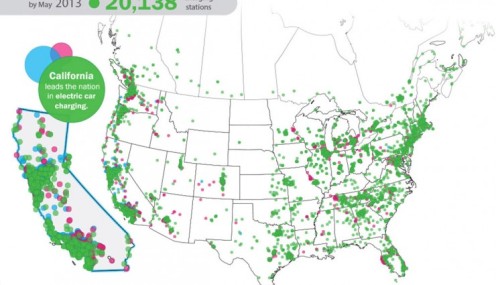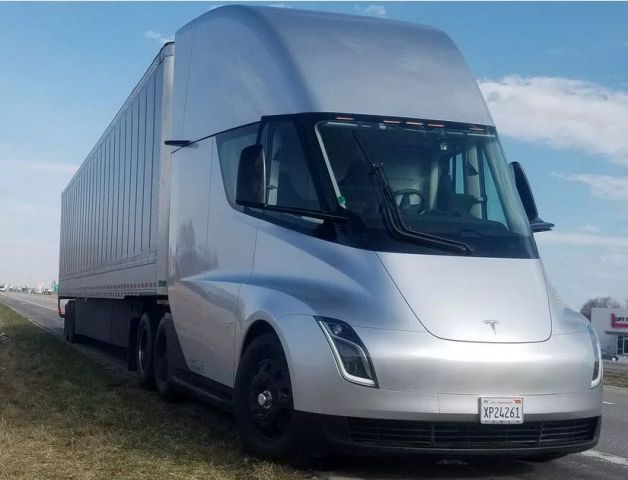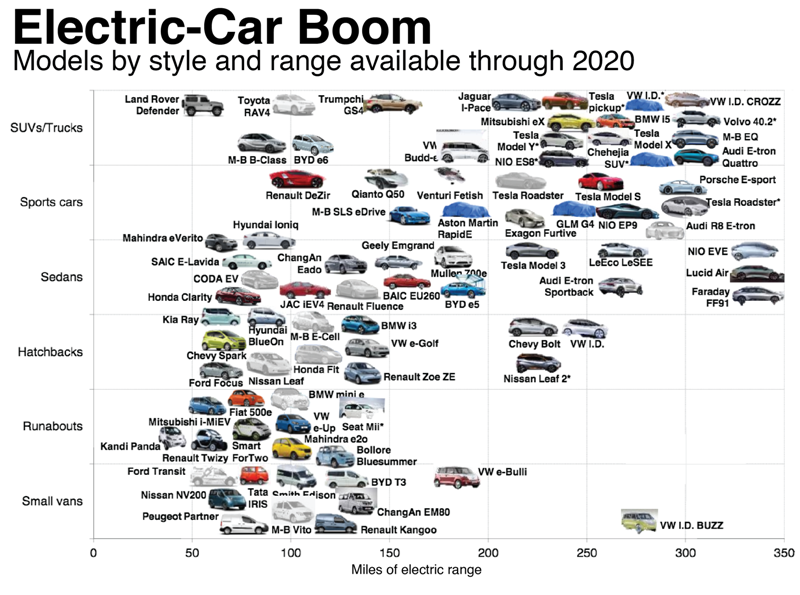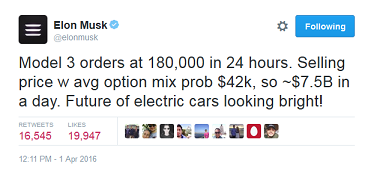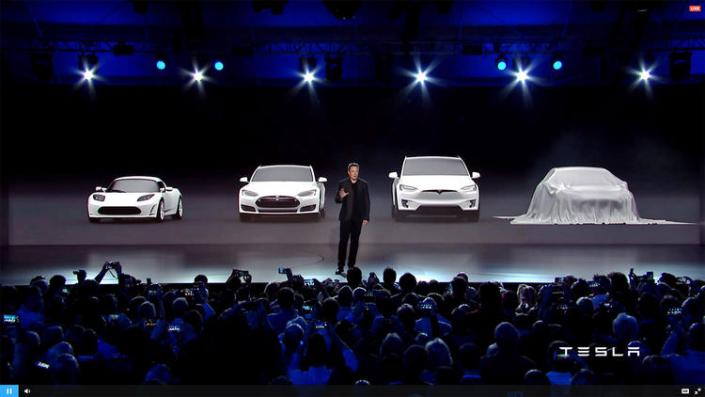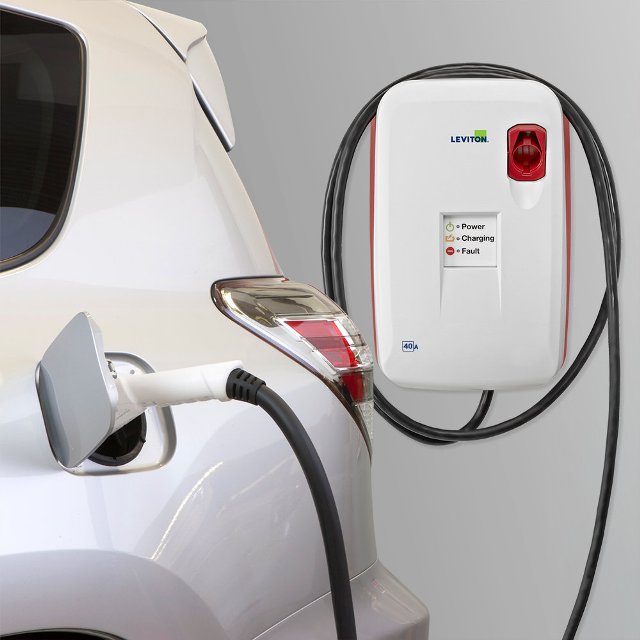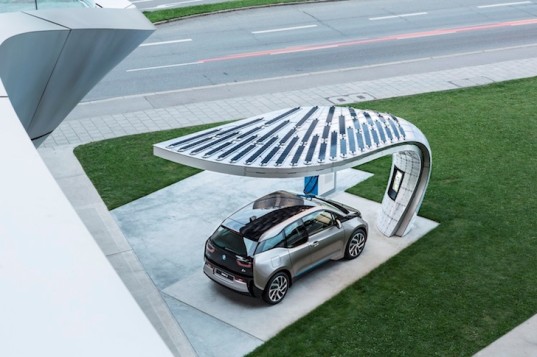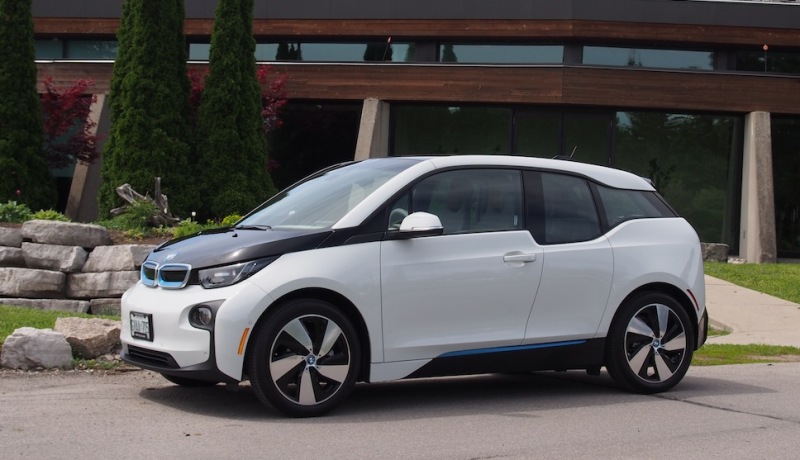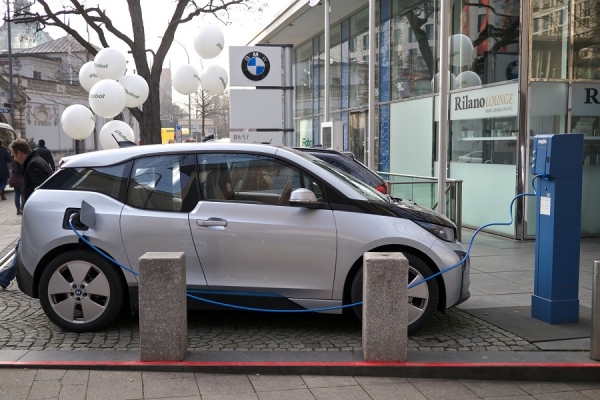EV Corridors Electric Vehicles Zero Emission Vehicles
Electric Vehicle Corridors (US)
Rolling, Rolling, Rolling, EVs Are Rolling, Electric Trucks are Next Up...
• More Charging Stations Needed Due to More Electric Vehicles, EVs on the Road
• Tesla Supercharger Stations Map
In the U.S., the world’s second-largest producer of greenhouse gases, transportation makes up the largest share of emissions.
Plugging in cars and trucks is a critical national challenge. How far has the U.S. progressed in its move to electric vehicles and transportation networks?
EV Charging in China and the United States, Models for National Planning
○ ○ ○ ○ ○ ○ ○ ○ ○ ○ ○ ○ ○ ○ ○ ○
US Congress House Transportation Committee in Action / 2019
US National/State/Local / Transportation Challenges & Opportunities / News
National plans for electric-car charging corridors
- • The U.S. Department of Transportation will establish 48 electric-vehicle charging corridors along national highways that cross 35 states and cover almost 25,000 miles
- • A total of 28 states, electric utilities, carmakers, and other organizations have committed to accelerate charging infrastructure along these corridors
- • The Administration will partner with 24 state and local governments to add more plug-in electric vehicles to their fleets
- • Two separate Department of Energy studies are underway to determine optimal scenarios for deploying national electric-car charging infrastructure
- • The existing DoE Workplace Charging Challenge has gained 38 new members, among them businesses, universities, electric utilities, and nonprofit organizations
Advancing America's 21st Century Transportation Network
- With the designation of alternative fuel corridors, the Federal Highway administration is establishing a national network of alternative fueling and charging infrastructure along national highway system corridors.
EV Trucks / Freight / Semi Electric / Light-Duty, Medium-Duty, Heavy-Duty
Local Transportation / Regional / National
Future of EV Highway Systems
• February 2018 / FedEx orders Tesla Semi electric trucks
• January 2018 / Volvo to Go after Tesla's Semi in 2019
Transport Topics / December 2018
As electric vehicle technology becomes increasingly viable for commercial trucking, fleets and manufacturers are now putting the first generation of battery-electric trucks on the road.
The introduction of electric-powered trucks represents the industry’s first steps toward a future beyond the internal combustion engine. It also marks perhaps the biggest change in trucking equipment since the motor vehicle replaced the horse and carriage.
Electric vehicles represent a path to zero-emission trucking and huge fuel savings for fleets ... applications will be limited at first, and several hurdles remain for adoption.
Early models are designed primarily for shorthaul applications such as urban pickup and delivery, refuse trucks and port drayage.
Opportunities for regional routes... are next, followed at some point by longhaul operations. Battery technology will need to continue to improve to reduce weight and extend vehicle range.
The industry also will need to establish adequate charging infrastructure to support these vehicles.
○
• 2016 / Electric Truck Overview — Electric Light-Duty Trucks, Medium-Duty Trucks, & Heavy-Duty Trucks
• June 2015 / Making Trucks More Efficient Isn't Actually Hard to Do
○ ○ ○ ○ ○ ○ ○ ○ ○ ○ ○ ○ ○ ○ ○ ○
Going Green, Alt-Energy
December 2015 / Public Law No: 114-094
Renewable Energy and Electric Vehicles
Sec. 151. National electric vehicle charging and hydrogen, propane, and natural gas fueling corridors
(a) ... the Secretary shall designate national electric vehicle charging and hydrogen, propane, and natural gas fueling corridors that identify the near- and long-term need for, and location of, electric vehicle charging infrastructure, hydrogen fueling infrastructure, propane fueling infrastructure, and natural gas fueling infrastructure at strategic locations along major national highways to improve the mobility of passenger and commercial vehicles that employ electric, hydrogen fuel cell, propane, and natural gas fueling technologies across the United States.
(b) Designation of Corridors - In designating the corridors... the Secretary shall --
(1) solicit nominations from State and local officials for facilities to be included in the corridors;
(2) incorporate existing electric vehicle charging, hydrogen fueling, propane fueling, and natural gas fueling corridors designated by a State or group of States; and
(3) consider the demand for, and location of, existing electric vehicle charging stations, hydrogen fueling stations, propane fueling stations, and natural gas fueling infrastructure.
(c) Stakeholders - In designating corridors under subsection (a), the Secretary shall involve, on a voluntary basis, stakeholders that include--
(1) the heads of other Federal agencies;
(2) State and local officials;
(3) representatives of--
(A) energy utilities;
(B) the electric, fuel cell electric, propane, and natural gas vehicle industries;
(C) the freight and shipping industry;
(D) clean technology firms;
(E) the hospitality industry;
(F) the restaurant industry;
(G) highway rest stop vendors; and
(H) industrial gas and hydrogen manufacturers; and
(4) such other stakeholders as the Secretary determines to be necessary.
(d) Redesignation- Not later than 5 years after the date of establishment of the corridors under subsection (a), and every 5 years thereafter, the Secretary shall update and redesignate the corridors.
(e) Report- During designation and redesignation of the corridors under this section, the Secretary shall issue a report that--
(1) identifies electric vehicle charging infrastructure, hydrogen fueling infrastructure, propane fueling infrastructure, and natural gas fueling infrastructure and standardization needs for electricity providers, industrial gas providers, natural gas providers, infrastructure providers, vehicle manufacturers, electricity purchasers, and natural gas purchasers; and
(2) establishes an aspirational goal of achieving strategic deployment of electric vehicle charging infrastructure, hydrogen fueling infrastructure, propane fueling infrastructure, and natural gas fueling infrastructure in those corridors by the end of fiscal year 2020.'.
○ ○ ○ ○ ○ ○ ○ ○ ○ ○ ○ ○ ○ ○ ○ ○ ○ ○ ○ ○
Interstate Transportation / Infrastructure News
April 2016
Former Senator Jeff Bingaman of New Mexico and Chairman of the Senate Energy and Natural Resources Committee from 2001 to 2003 and 2007 to 2013 is appointed to the National Infrastructure Advisory Council by President Obama.
July 2015
The National Infrastructure Advisory Council makes three overarching recommendations to address these findings. In short, we need to
- 1) baseline current risks and establish a Federal vision for transportation resilience;
- 2) develop the analytic tools, models, and exercises to better understand and plan for emerging risks and interdependencies; and
- 3) use the results of these efforts to operationalize resilience by increasing funding and implementing effective Federal practices, procedures, and procurement processes.
Illinois Announces First Ever Charging Station Network for Route 66 Electric Corridor
New Charging Stations to Help Expand Illinois’ Sustainable Transportation System
CHICAGO – Nov. 28, 2014 – Governor Pat Quinn today announced an investment of $1 million to establish a network of charging stations for electric vehicles along historic Route 66 through Illinois. The network will support commuter and tourist driving for the growing electric vehicle (EV) sector. Today’s announcement is part of Governor Quinn’s agenda to drive Illinois toward a sustainable future.
“We are building a 21st century infrastructure across Illinois and we need to make sure that it is sustainable for future generations,” Governor Quinn said.
“This new project exemplifies Illinois’ place as the innovation capital of the Midwest, with cutting-edge business practices that create jobs and encourage sustainability.”
The state has joined local governments and the private sector to create the Illinois Route 66 Electric Corridor, a partnership that connects communities along the 300-mile stretch from Lake Michigan to the Mississippi River in the Metro East area with a network of high-power EV charging stations. The network will make it possible for EV drivers to travel between Chicago and St. Louis, two of the key urban markets for EVs in the nation.
The cities of Plainfield, Dwight, Pontiac, Normal, Lincoln, Springfield, Carlinville and Edwardsville will each install one or more fast charging stations that are easily accessible from historic Route 66, allowing EV drivers to retrace its original pathway. Each of the seven charging points in the network will include one fast charging station capable of charging vehicles with either CHAdeMO or SAE connectors within 15-20 minutes and one level 2 (240/120 volt) charging station. Installation of the charging stations will begin this month, with targeted completion by summer 2015.
The project is supported by auto manufacturers, including BMW, Illinois-based Mitsubishi and Nissan, which is contributing the charging station to be installed in Edwardsville.
"The State of Illinois' Route 66 EV corridor is consistent with Mitsubishi Motors North America's desire to affect a broader acceptance of EVs through user-friendly infrastructure," MMNA General Manager of Corporate Communications Dan Irvin said. "It is our belief that projects like this will help our state maximize the possibilities of EVs."
“Residents and visitors alike will soon be able to enjoy the sites, attractions and mystique of the state’s Historic Route 66 with easy access to charging stations for their electric vehicles,” Illinois Department of Commerce and Economic Opportunity Director Adam Pollet said. “It’s truly an electrifying addition to the ‘mile after magnificent mile’ to be discovered in Illinois.”
The University of California - Davis, one of the world’s leading universities on sustainable transportation, provided technical assistance for project planning.
“Illinois has one of the better combinations of price and carbon emissions per kilowatt-hour of electricity in the nation,” Gustavo Collantes, with the UC Davis Policy Institute and lead of the Zero Emission MAP initiative, said. “This infrastructure has the clear potential to save drivers money while delivering environmental benefits to the state and the nation.”
-=-=-=-=-=-=-=-=-=-=-
Further Information:
http://www3.illinois.gov/PressReleases/ShowPressRelease.cfm?SubjectID=2&RecNum=12880
http://www.route66news.com/2014/11/30/auto-chargers-coming-route-66-illinois/
http://energy.gov/sites/prod/files/2014/04/f14/2013_amr_01.pdf
Route 66, the 'Mother Road' http://www.nps.gov/nr/travel/route66/index.html
○ ○ ○ ○ ○ ○ ○ ○ ○ ○ ○ ○ ○ ○ ○ ○
Multi-state ZEV plans
http://www.oregon.gov/ODOT/HWY/OIPP/docs/Multi-State_ZEV_ActionPlan.pdf
http://www.govtech.com/transportation/Eight-Governors-Sign-Electric-Vehicle-Promotion-Pact.html
○ ○ ○ ○ ○ ○ ○
EV Sales
March 2016
Elon Musk wows with newly unveiled Tesla Model 3, nets 133,000 pre-orders and counting
Musk: The car represents the culmination of a long-held dream to bring affordable, zero-pollution vehicles to the world's highways.
With CO2 levels and global temperatures at record highs, the Model 3 will help bring engineering solutions to the climate change problem.
○ ○ ○ ○ ○ ○ ○ ○ ○ ○ ○ ○ ○ ○
Electric/EV Info
(added chronologically)
EV Sales Blog - http://ev-sales.blogspot.com/
Insider EVS - http://insideevs.com/monthly-plug-in-sales-scorecard/
Green Car Reports - http://www.greencarreports.com/news/electric-cars
EV Connect - EV Together
EV Travel Charging / Corridor Maps
Charging locations
http://www.plugshare.com/ (mobile)
https://itunes.apple.com/us/app/plugshare/id421788217?mt=8 (iOS app)
https://play.google.com/store/apps/details?id=com.xatori.Plugshare&hl=en (Android app)
○ ○ ○ ○
http://en.wikipedia.org/wiki/Charging_station
○
http://www.westcoastgreenhighway.com/electrichighways.htm - West Coast Green Highway
http://www.theevproject.com/charging-maps.php - The EV Project
http://www.energy.ca.gov/2015publications/CEC-600-2015-015/CEC-600-2015-015.pdf - Corridor Fast Charging in California
http://inhabitat.com/tesla-supercharging-stations-enable-effortless-travel-from-la-to-new-york/ (2014)
http://inhabitat.com/google-maps-now-indicates-electric-vehicle-charging-stations - Google Maps News, EV Charging Locations - (2011)
http://www.pev4me.com/find-public-charging-stations-for-your-electric-car-using-the-plugshare-app/ - Find Your EV Plugshare(2012)
○
What if you could charge your car from photovoltaic solar panels fitted to the roof of your home?
http://www.wired.com/2014/10/envision-solar-ev-charger/ - Back to the beginning of solar power for car charging (2014)
- https://www.revisionenergy.com/at-home/electric-vehicle-charging/
- http://www.post-gazette.com/business/2014/07/25/Mall-at-Robinson-unveils-new-solar-powered-car-charging-stations/stories/201407250036
- http://www.greencarreports.com/news/1079733_electric-car-solar-panels-are-they-right-for-you
Getting Millions of Zero Emission Cars on the Road By 2025
- UC Davis Initiative Playing a Key Role in Multi-State Action Plan
A UC Davis project to accelerate the market adoption of zero emission vehicles (ZEVs) was highlighted in a recently-released plan to get 3.3 million advanced, clean cars in eight states on the road by 2025. ZEVs include battery-electric, plug-in hybrid and fuel cell electric vehicles.
Zero Emission Market Acceleration Partnerships (ZE MAP), a project of the UC Davis Policy Institute for Energy, the Environment and the Economy, Institute of Transportation Studies (ITS-Davis), and Plug-In Hybrid & Electric Vehicle Research Center (PH&EV Center), has been providing technical assistance since last fall to state and local governments working to expand ZEV adoption. Eight of those states – California, Connecticut, Maryland, Massachusetts, New York, Oregon, Rhode Island and Vermont – released a multi-state ZEV Action Plan in May 2014...
http://www.nescaum.org/topics/zero-emission-vehicles
The ZE MAP was launched last fall at a meeting with nearly 50 key leaders from state and municipal governments across the nation pledging to work together on critical strategies to build the market. Participants described their activities, highlighted successes and outlined challenges they face with supporting and implementing market introduction and advancement of these advanced clean cars.
ZE MAPPING was created to provide technical support to groups such as eight states working to implement a multi-state Action Plan. Participation in ZE MAP goes beyond those eight states -- more than 20 governmental entities are benefiting from leading-edge accessible data, analysis and expertise that UC Davis brings to the ZE MAP with its 25 years of interdisciplinary expertise in sustainable transportation...
○
http://zeroemissionmap.ucdavis.edu/
http://128.120.151.3/phev/files/PEV-Market-Briefing-Turrentine-28May2014.pdf
○ ○ ○ ○ ○ ○ ○ ○ ○ ○ ○ ○ ○ ○ ○ ○ ○ ○ ○ ○
GreenPolicy360: The Time is Now for *Solar-charging Stations
- Picture EV Corridors with 21st Century infrastructure
First Up -- Solar-charging Stations via BMW and EIGHT Point.One
More Photos/Solar-Powered Charging Station
Maps via http://www.afdc.energy.gov/ - Alternative Fuels Data Center
- http://www.afdc.energy.gov/locator/stations/ - Stations Locator
- http://www.afdc.energy.gov/fuels/data_methods_stations.html - AFCD Data Mapping Methods
As of April 20, 2016 - 20,823 Alternative fuel stations mapped in the United States
Prepping for the Zero-Carbon Highway
-- Via Streets / 2016
In order to fight climate change, we’re heading into a zero-carbon future.
Manufacturers are now racing to match the driving distance of Tesla’s offerings...
BMW and GM, along with other American and European companies, use the Combined Charging System (CCS). This is also known as “SAE Combo” in North America because it expands upon the previously-mentioned SAE J1772 standard by adding two extra DC pins on the bottom. A CCS port can accept either a low-power charge plug or a high-power one, though a high-power plug can’t fit into a low-power socket. Despite that problem, it seems like it should be one of the more popular systems, but it’s the youngest standard and the others have had a head start.
Nissan and other Japanese automakers use a system called CHAdeMO. This uses a large, round plug which isn’t physically compatible with the SAE standard at all, so a high-speed charging socket needs to be placed adjacent to the normal low-speed SAE port on any vehicle that uses this system. CCS and CHAdeMO installations may vary in power between 20 kW up to about 60 kW, making them capable of restoring 60 to 180 miles of range to a 100 mpge car in an hour, although development is continuing on versions that will push that significantly higher.
And that brings us to Tesla, who bring the smallest and sleekest design, able to do both low-speed and high-speed charging through a single unified connector. However, the downside is that this requires adapters whenever non-Tesla charging stations are encountered. Tesla offers adapters for both low-speed SAE and high-speed CHAdeMO plugs, but nothing (yet) for the CCS standard. Their high-speed charging system is called the Supercharger, and can pump 120 kilowatts of power or more, allowing peak charging rates of 360 miles per hour. Again, this ends up being slower in practice due to the slowdown as batteries fill up, but Tesla says that cars equipped with their 85 kilowatt-hour battery pack, good for 257 to 270 miles of range depending on model, can be fully recharged in 70 minutes.
There are already more than 3,500 fast DC chargers deployed through the country across the three different standards. Mapping them out, they reveal some surprising patterns.
Composite of maps showing coverage for CHAdeMO, SAE Combo/CCS, and Tesla fast DC chargers, plus a fourth showing all stations using the previous 3 standards plus Level 2 charging stations...
Deployment patterns for the various charging station types.
The two standardized systems are mostly clustered in metropolitan areas, but include some corridors that were probably sponsored by state governments or other regional entities. CHAdeMO has the most stations, but CCS is catching up. One issue is that CHAdeMO and CCS installations usually only have one or two chargers per station, which can be troublesome if you need to charge and come across one that’s already in use, blocked, or broken. The small sites greatly increase the chance that you’ll have to go somewhere else or sit and wait for a long time to get an available charger.
Tesla appears to be the only entity that’s thinking nationally about fast-charging infrastructure, and has stretched them along multiple corridors across the country, facilitating coast-to-coast travel. Notably, the first cross-country leg of the Supercharger network was built through southern Minnesota, and company employees used it to smash the record time for cross-country EV travel in February 2014. Tesla averages more than 4 chargers per station, and some installations have two or three times that number. Despite having the smallest number of stations, Tesla has the largest number of DC fast charger outlets and the broadest coverage area.
The company intended their Supercharger network to primarily be used for intercity travel, so they sometimes aren’t available in metropolitan areas. Still, when combined with the extended coverage area available through the (somewhat expensive) CHAdeMO adapter, Tesla maintains a strategic advantage over other automakers.
Most new CHAdeMO and CCS stations are being built with dual-standard chargers, like the one from the University of Minnesota that I pictured above. Dual-standard chargers are apparently only about 5% more expensive than ones only operating on one of the two, so it makes sense to just include both types of connectors. It’s conceivable that future stations may be triple- or quad-standard, including J1772 and/or Tesla adapters, allowing all types of vehicles to use them, but I hope one of the three fast-charging types will eventually become dominant and we won’t have to worry about the mess of different plugs a decade from now.
○
- Air Quality
- Atmospheric Science
- China
- Clean Air
- Climate Change
- Climate Policy
- Earth360
- Eco-nomics
- Electric-Powered Transportation
- EOS eco Operating System
- Energy
- Environmental Full-cost Accounting
- European Union
- Green Business
- Green Best Practices
- Illinois
- New Definitions of National Security
- New Mexico
- Off the Grid
- Planet Citizen
- Planet Citizens, Planet Scientists
- Renewable Energy
- Solar Energy
- Strategic Demands
- Sustainability
- Sustainability Policies
- Transportation
- US
